 |
|
|
plants
text index | photo
index
|
| coastal plants |
| Pinang
palm or
Betel-nut palm Areca catechu Family Arecaceae updated Nov 10 Where seen? Now no longer fashionable, this palm is sometimes seen in sites of old 'kampungs' or villages. According to Burkill 'undoubtedly Malaysian in origin, but impossible to find any restricted part of Malaysia as its home.' According to Whitmore, 'no one has ever found a wild betel palm' in Malaya. It has since been cultivated in places as far away as Africa and the Pacific islands. Features: A tall elegant palm (to 10m). Leaves rather short with stiff leaflets. Tiny pale flowers appear in an inflorescence on zig-zag 'stems'. The small oval fruits are green turning orange and are miscalled 'nuts'. Human uses: The sliced seeds (endosperm) are chewed, sometimes together with other leaves such as from the pepper plant or gambier as a mild stimulant. Burkill has a long explanation of the palm's history and traditional preparation. All parts of the palm is put to use. The trunks as flooring, the fallen flower spathes as rough buckets, a hat or to line carrying baskets. Besides medicinal uses, various parts of the plant, from fruit to flowers are also used in spiritual ceremonies. According to Wee, the dried ripe seeds are used by the Chinese to expel tapeworms and roundworms, to treat diabetes, indigestion, lumbago and urinary problems. The Malays use the leaves in a treatment for diarrhoea in children. |
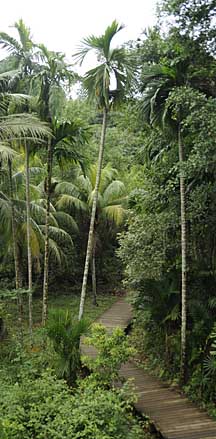 Chek Jawa, Oct 09 |
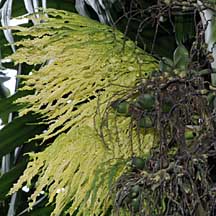 Flowers. 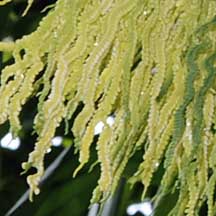 |
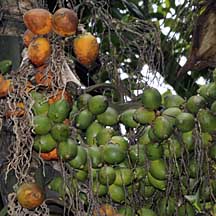 Fruits. 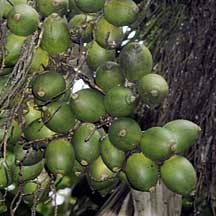 |
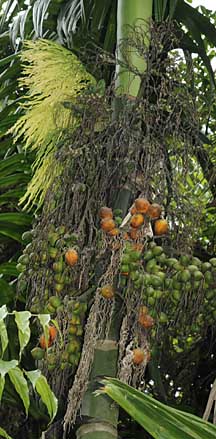 Chek Jawa, Oct 09 |
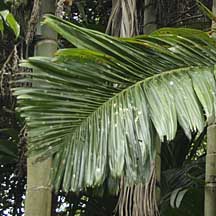 |
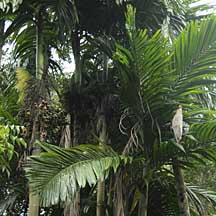 Chek Jawa, Oct 09 |
|
Links
References
|
|
|